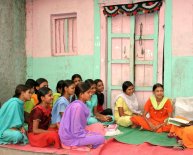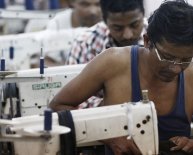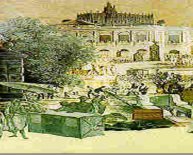
Development of textile industry
 By Emanuela Gregorio
By Emanuela Gregorio
African culture is on the rise, not just on the continent but across the globe. The life and music of Fela Kuti attracted thousands to the Broadway musical in New York and elsewhere. Nollywood produces more than 1, 800 movies per year and has turned into a US $3.3 billion industry, according to the 2015 article by Jake Bright in Fortune Magazine entitled “Meet ‘Nollywood’: The Second largest movie industry in the world”. African movies and music can now be accessed through online platforms across the world.
Africa-inspired designs are now regularly shown on the catwalks in fashion shows in Paris, London and Milan. Michelle Obama, the First Lady of the US, wears African-influenced clothing from Nigerian designer Duro Olowu. Fashion is big business: the combined apparel and footwear market in Sub-Saharan Africa is estimated to be worth US $31 billion according to Data from Euromonitor International.
This shows that African culture is an asset. Yet we are only starting to recognize its potential to support development, create jobs, integrate countries, connect societies and strengthen identities. These so-called “creative industries”, i.e. African music, dance, clothing, TV and cuisine, can earn billions of dollars for African countries and create jobs for our growing workforce.
It is important to look at these industries through a value-chain approach to see the contribution that a “made in Africa” brand can make to African economies. Creative industries can diversify the economic base of our countries and attract tourism. Technological changes in manufacturing, distribution and marketing are driving the growth of these industries in which many young men and women would like to work.
The fashion industry is expected to double in the next 10 years, generating up to US $5 trillion annually. In the USA alone, every year $284 billion are spent on fashion retail, through the purchase of 19 billion garments. This presents a tremendous opportunity for Africa at various levels of the value chain: from design to production to marketing, the fashion industry is a profitable business.
What does Africa need to do to build its fashion industry?
The good news is that the fashion industry is already developing. But it is still in its infancy. The textile industry value chain begins with the production of cotton, spinning and twisting of the fibre into yarn, the weaving and knitting of the yearn into fabric, and the bleaching, dying and printing of the fabric to obtain the fashionable garments that we all wear today.
At each step value of the value chain, more value is added and additional jobs are created. Targeting the fashion industry means targeting the whole value chain, from the smallholder farmers to the fashion designers. The fashion industry in particular holds considerable potential to motivate and bring change to some of the most disadvantaged people, especially women and youth, while advancing structural transformation.
At the African Development Bank, we look at these global value chains to see how each country can join in at a particular stage based on its comparative advantage. Today, international textile firms are looking at Africa not only for the purpose of production in view of increasing labour costs in Asia. They are also looking at Africa to take advantage of the growing African consumer market. This presents an opportunity for African countries to find their place in these value chains, from the producers of raw materials on up.

















